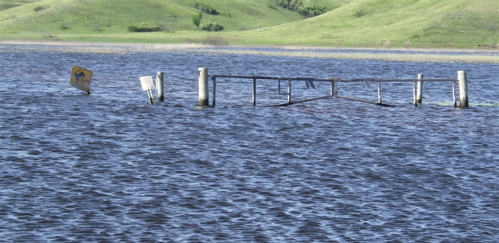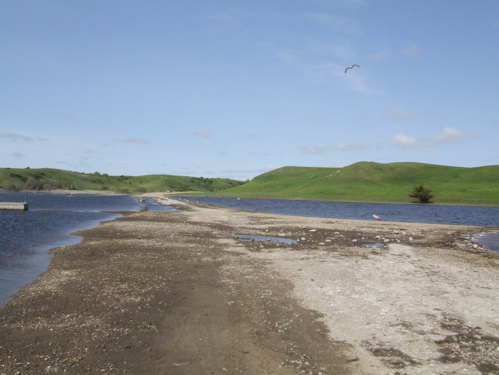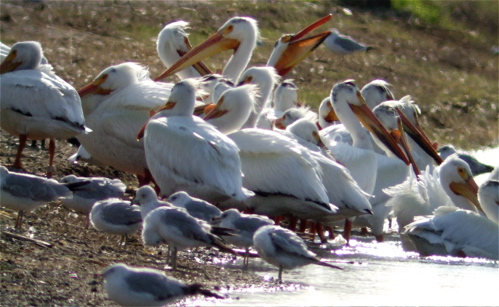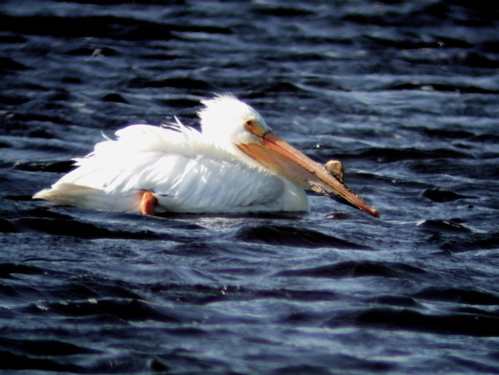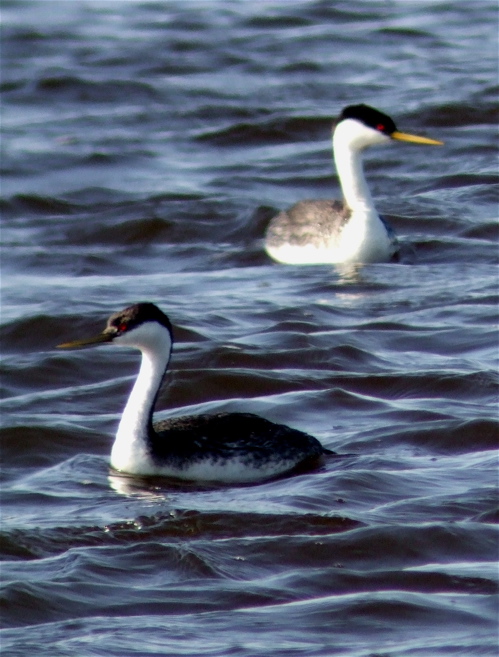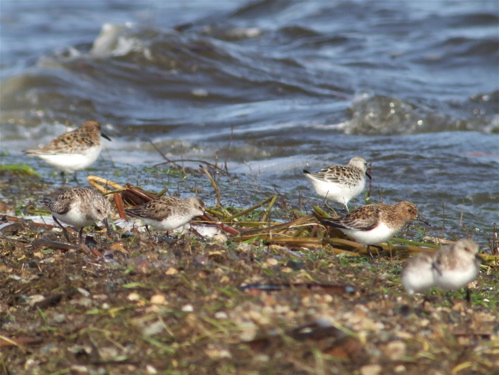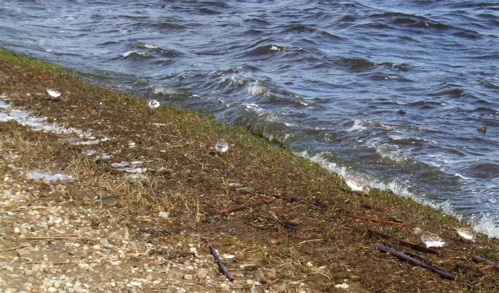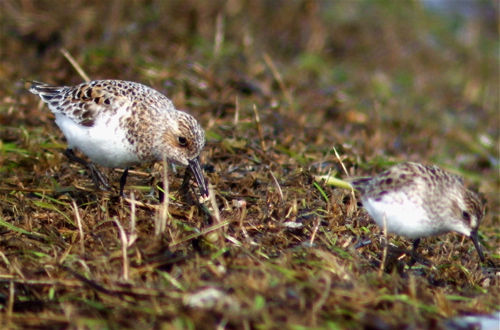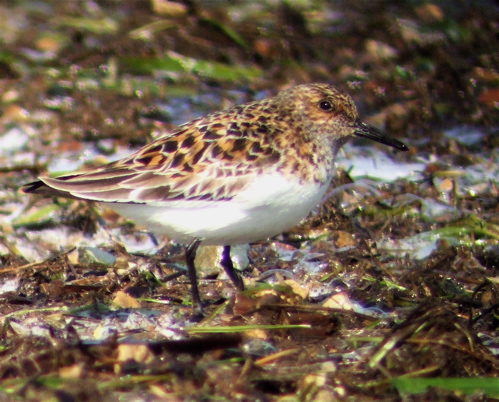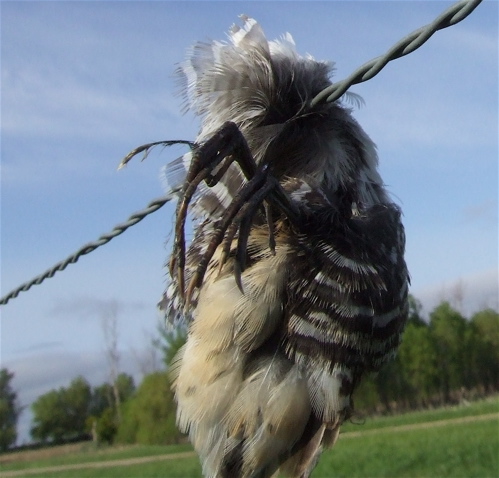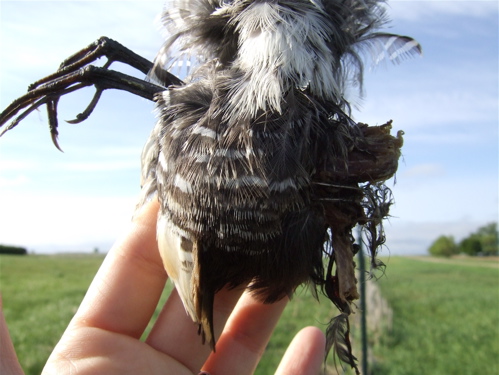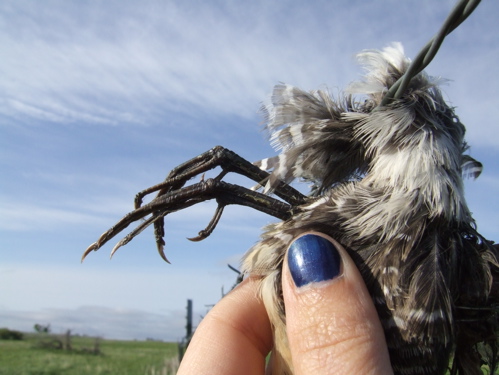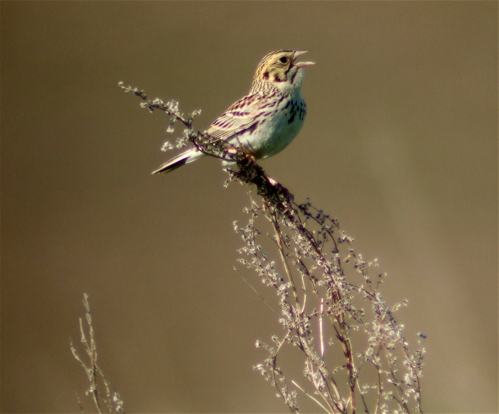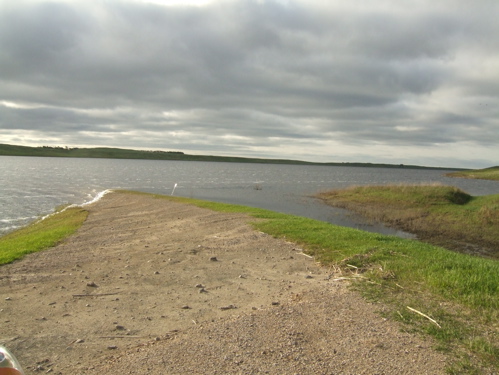 I spent the day birding around Arrowwood NWR while in North Dakota with my buddy Kate Fitzmeier. And when I say "around," I literally mean around--it was completely flooded, note the the flooded road above.
I spent the day birding around Arrowwood NWR while in North Dakota with my buddy Kate Fitzmeier. And when I say "around," I literally mean around--it was completely flooded, note the the flooded road above.
Some roads were more flooded than others. Check out the Slippery When Wet sign above--I'll say! I was sad we couldn't take this road, last year it led to the refuge's bison heard. I was also sad for the refuge itself, just about every building experienced severe flooding.
Though many roads were closed, some like this road did make for a nice path for birding. Kate stayed with the vehicle, she was on a mission for some badger. We found some holes in the hills that looked very badger-worthy.
When we arrived, some pelicans and gulls were loafing on the road. You might notice that some of the pelicans have little horns on the top of their beaks. They get those during mating season and then after they mate, it comes off (So does that growth on the bill signify that they are horny?--insert bad joke grown here). When I've been out to pelican rookeries for banding, we could sometimes find horns on ground that had been shed...they looked like old nasty toe nails. As I walked down the road, the pelicans assessed my movement, "Is she really coming this way? Do we really need to move?'
Once out on the water, I felt as though I was getting disdainful looks, I had disturbed their valuable loafing time.
There were quite a few western grebes out on the water. Some were at the very beginnings of their courtship ritual. We didn't see any actual dancing, but there was some head bobbing and pre-dancing stops going on.
Quite a few shorebirds were running around. We saw a ruddy turnstone (not pictured above) and then several of the above peeps who didn't seem to care about people one bit. I was confused by one of them and had to enlist the help of South Dakota shorebird guru Doug Buri. I've gone on one of his shorebird workshops which are great and I highly recommend him, one year I need to do his sparrow workshops. He told me long ago when I lamented about shorebird id that my problem was that I looked at shorebirds from too far away, when you have them close, it's easier to identify them and it certainly is true that it's easier to get an id if they are close.
This day, my challenge was that the peeps kept running towards me as I was trying to take a photo. I kept having to back up to be able to focus them in the scope because the kept running towards me. I took the above photo without the scope, at one point the sanderings were barely six feet from me. I left my shorebird guide at home and was not having much luck deciding on an id of the larger peeps with internet searches, so I emailed Doug some photos.
Fortunately, I was able to get some size comparison shots. The smaller peep on the right was so tiny, I was convinced it was a least sandpiper, but then noticed that the bill and the feet were the same color...that can't be a least sandpiper. Doug confirmed it when I sent him the photo that it was a semi-palmated sandpiper. Now, what could the larger bird on the left be?
The larger peep ended up being a sanderling and I needed Doug's help to figure that out. He said the reason was that I was probably not used to seeing them in variable breeding plumage, but I think my confusion was habitat. When I see sanderlings on the coast, they are fairly easy to id since they constantly run back and forth with the surf. Not so much surf on the North Dakota prairie. There is another way to tell them apart rom other shorebirds--they don't have a back toe, but trying to see that when they are darting around in grass, it a bit hard to see.

